#merovingian archaeology
Text
King’s Field Pendant
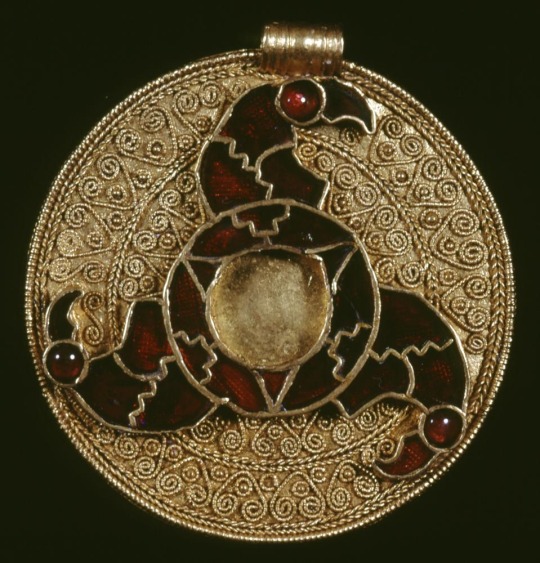
This magnificent pendant is the ultimate proof that the “Dark Ages” is an academic concept. Rather than Europe plummeting into darkness because of the “fall” of the Western Roman Empire, it’s more the lack of academic interest in the Early Middle Ages.
This Anglo-Saxon pendant was found on King’s Field (Kent) and is made of gold and garnet, but decorated extremely intricately with gabuchon, filigree and granulation. The garnet was used to form a triskele with round centre and ending in bird heads. At just 3,5 cm across, this was made by a master craftsman with materials from all over the known world.
The pendant might have been worn on a bit of string or rope, or it may have been worn as part of a glass beaded necklace. The pendant likely belonged to a woman.
The British museum, England
Museum nr. .1145.’70
Found in King’s Field - Kent, England
#merovingian#anglo saxon#viking#Vikings#frankish#carolingian#charlemagne#viking archaeology#germanic archaeology#Merovingian archaeology#Anglo Saxon archaeology#field archaeology#archaeology#field archaeologist#frisian#frisian archaeology#Germanic#jewelry#almandine#garnet#roman empire#western Roman Empire#germanic mythology#viking mythology#Norse mythology#pagan#kent#england#anglo Saxon England#paganism
821 notes
·
View notes
Text
I’m kind of thinking about making a third tumblr account dedicated to Germanic and Viking archaeology. Viking stuff is often romanticized, Frankish stuff gets all the attention while Merovingian stuff is hugely under appreciated. And if you look for anything Anglo-Saxon, you only get to see Sutton Hoo results.
Would anyone be interested in that?
Edit: I MADE ONE! @merovingian-marvels
#merovingian#frankish#Viking#Vikings#anglo saxon#vendel#archaeology#viking archaeology#Merovingian archaeology#Germanic archaeology#Norse mythology#Odin#Wodan
56 notes
·
View notes
Text

Broken Brooch
One of a pair of incomplete oval brooches found in Overhalla, Trøndelag.
On some objects I feel like doing more interpretation rather than showing all the damage and details. This one is definitely one with more interpretation than usual since from the angles available, it's pretty much impossible to see what's going on in some parts and it didn't make a lot of sense.
Brooch T6575 from UNIMUS
8 notes
·
View notes
Text
Viking ship remnants unearthed at burial mound where a "seated skeleton" and sword were previously found - CBS News
Ship building began earlier than we thought.

Have the best day that you can! ✌️

6 notes
·
View notes
Text






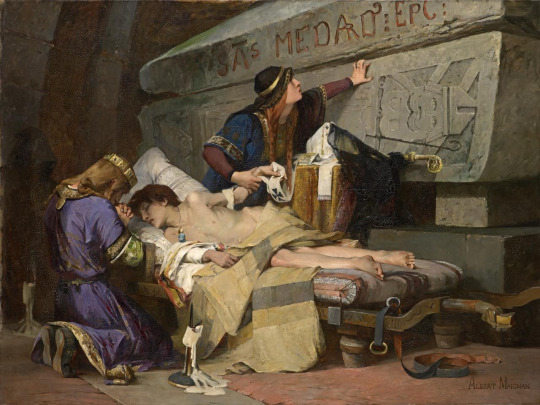
There's something truly magical about late 19th century history paintings.
It's the last gasp of the French Academic style, but instead of lots of drapery and allegory, they are taking cues from the rising tide of archaeological research and forward-looking school of narrative illustration, which adds up to the first real attempts to depict the past as best they it could be imagined. These paintings have more in common with the old-(ish) National Geographic illustrations of life in ancient Knossos than they do with their contemporaries in the Pre-Raphaelite movement.
From top to bottom-
"Cardinal Richelieu at the Siege of La Rochelle," by Henri-Paul Motte (1881)- depicts the siege by the forces of Louis XIII of France, lead by Cardinal Richelieu, against the Huguenots in the port of La Rochelle, 1627-1628
"Bringing Home the Body of King Karl XII of Sweden," by Gustaf Cederstrom (1884)- depicts the route of the Swedish army following a failed invasion of Norway that ended with the death of King Karl XII, 1718
"Zenobia's Last Look on Palmyra," by Herbert Schmalz (1888)- depicts the Palmyrene Queen Septimia Zenobia in the moments before leaving her besieged capitol, having been captured by the forces of the Roman emperor Aureliuan, 272 AD
"Reply of the Zaporozhian Cossacks to Sultan Mehmed," by Ilya Repin (1880s)- depicts the supposedly historical story of the Cossacks sending an insulting reply to an ultimatum from the Sultan of the Ottoman Empire, Mehmed IV, 1676
"The Execution of Lady Jane Grey," by Paul Delaroche (1833)- depicts the execution of the teenaged Lady Jane Grey, who had been elevated to the throne of England and Ireland for (approx) nine days in July of 1553. Her execution was at the Tower of London in February, 1554
"The Cadaver Synod" by Jean-Paul Laurens (1870)- depicts the posthumous trial of Pope Formosus by his eventual successor Pope Stephen VI ten months after Formosus' death, 897
"Chlodobert's Last Moments" by Albert Maignan (1880)- depicts the death of the Merovingian Prince Chlodebert, son of Chilperic I, before the tomb of Saint Medard, where the prince had been brought in the hope of a miracle, 580
516 notes
·
View notes
Text
A metal detectorist has unearthed a stunning gold ring in Denmark, potentially unveiling a new chapter in European history. This rare find suggests the existence of an unknown princely family with ties to the Merovingian Kingdom of France! This could change our understanding of ancient European alliances. A true testament to the power of amateur archaeology!
24 notes
·
View notes
Photo








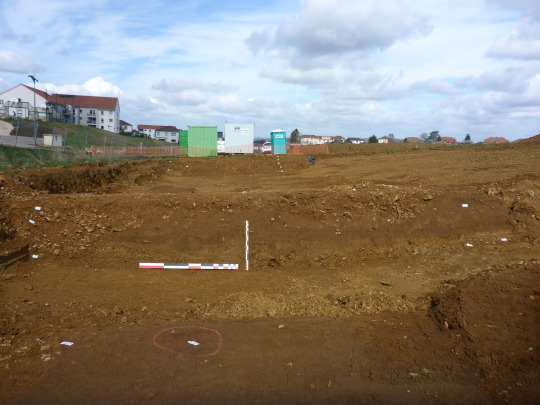
A Rural Necropolis from Late Antiquity Discovered in France
Archaeologists have unearthed a small rural necropolis from the late 5th century (Late Antiquity) at Sainte-Marie-aux-Chênes in northeastern France.
The necropolis, which is located along an ancient road, contains the remains of cremation structures as well as several richly furnished inhumations. The burial ground is most likely linked to the remains of an ancient Roman villa discovered nearby more than a decade ago.
In 2009, archaeological material was discovered during a survey of the site prior to the construction of a subdivision. Archaeologists discovered the remains of a 1st-century Roman villa’s pars Rustica (the farm buildings) and a Medieval hamlet occupied until the 12th century during the two seasons of excavations that followed. Three Merovingian-era (mid-5th-8th centuries) tombs containing the remains of seven people, all from the same family, were found in the ruins of a Roman estate barn.
In 2020, when the subdivision planned to grow toward the former Ida mine and factory, excavations started up again. Test pits discovered the first early Iron Age remains at the site attesting that the area was settled earlier than previously realized and a continuation of the Medieval hamlet into the valley. In addition, a cremation pit dating to the 1st century and a secondary filling from the Gallo-Roman period were also unearthed.
In contrast to the 2009–10 digs, the 2020 excavation investigated the opposite side of the valley. Although the soil has been severely eroded, this has had the fortunate archaeological side-effect of accumulating sediment layers over the necropolis, aiding in the preservation of the remains.
About ten cremation structures were found by archaeologists after they dug through those layers. In meticulously carved quadrangular pits and much rougher round niches that appear to be postholes but aren’t, fragments of charred bone remains were discovered. There aren’t any cinerary urns left, and not much bone remains. Some nails, possibly from a coffin, and a square pit with a collection of blacksmithing equipment and forge remnants were discovered (tongs, metal scraps, slag).
In the same area, ten Late Antiquity tombs were discovered. The pits were carefully dug in parallel rows. There was a single inhumed individual in supine position, adults of both sexes, and four confirmed young children in each grave. Hairpins and necklaces were used to identify two adult women. While no coffins or burial beds were discovered in the graves, iron nails and wood traces indicate that the bodies were buried in or on wooden biers.
The deceased were buried with a variety of grave goods. Ceramic vessels made of local Argonne clay were discovered at the bodies’ heads and/or feet. They are believed to have contained food offerings now long decomposed. High-quality and diverse glassware was also buried with the dead: cups, bottles, flasks, goblets, bowls, and dishes. The deceased was adorned with jewelry, mostly copper alloy pieces with beads, amber, and glass paste.
There were coins in the graves as well, some individual, some in groups, most likely held in organic material purses. Last but not least, two bone combs and a miniature axe were discovered next to a child’s head.
The excavation’s recovered remains are still being studied. Researchers hope to learn more about the deceased’s sex, age, and health records. The necropolis itself is still being studied to learn more about how it was organized and used, as well as to shed light on the funerary practices of the people who lived and died there in Late Antiquity.
By Leman Altuntaş.
#A Rural Necropolis from Late Antiquity Discovered in France#Sainte-Marie-aux-Chênes#ancient tombs#ancient graves#ancient artifacts#archeology#archeolgst#history#history news#ancient history#ancient culture#ancient civilizations
19 notes
·
View notes
Text

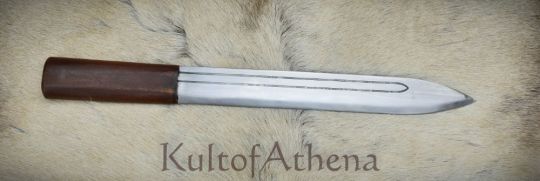

Markland Merchants – Continental Broad Seax with Leather Sheath
Also available without a sheath.
Designed by Markland Merchants to be a historically accurate broad seax for the serious Viking reenactor – it has a blade of sharpened tempered EN45 high carbon steel which is tempered to a 56-58 HRc hardness. The grip is stained Poplar wood. The Poplar wood is ideal for detailed carving which makes this dagger an ideal project dagger for you to customize to your own liking. The blade tang is durably secured into the hilt and the length of the tang within the grip is slightly longer than half the length of the wood grip. Included with the seax is a durable leather sheath of high quality vegetable-tanned leather with stitched construction. The sheath is left undyed so that it can be oiled or dyed to your preference for a custom finish.
This light broad seax is reminiscent of weapons that have been found in archaeological digs from Paris to Trondheim. Blades like this were used by the Merovingians/Carolingians and other Iron age/ Viking age cultures. It could have been purchased at a trade center or obtained at no cost as a battlefield pick-up. These blades are very robust with both the edge and the back of the blade curving towards the tip, which is generally located at the centerline of the blade. Many examples have two decorative grooves that meet toward the tip of the blade. Some examples like this one have a heavy broad blade that is designed to defeat mail shirts. This was accomplished by thrusting it into an opponent and forcing apart and breaking the riveted links so that the blade could pass through.
#Kult of Athena#KultOfAthena#Markland Merchants#New Item#New Items#New Item Wednesday#Viking#Vikings#Viking Knife#Viking Knives#knife#knives#weapon#weapons#blade#blades#Dark Age#Dark Ages#Dark Age Knife#Dark Age Knives#Iron Age#Viking Age#Seax#Seaxes#Merovingians#Carolingians
0 notes
Text
Remains of Viking ship found in Norwegian paddock under lost burial mound
Published
November 27, 2019 21: 33: 40
Related Story:
Viking ship found buried next to busy Norwegian freeway
Researchers have actually found what they think to be a 1,000-year-old Viking funeral service ship buried under Norwegian farmland.
Key points:
The ship-like structure was spotted under the surface area of a Norwegian paddock
It is thought the ship initially extended in between 16 to 17 metres, however parts were damaged by tilling
Researchers will utilize non-invasive methods to survey the location even more
Archaeologists from the Norwegian Institute for Cultural Heritage Research (NIKU) utilized a georadar car to scan paddocks in Edoy, in More and Romsdal County, while examining a possible settlement situated close by.
Analysis of the radar-mapped paddock exposed the overview of a boat believed to have actually been utilized in a Viking burial.
It is believed the ship, the remains of which step about 13 metres long, was when buried under a big mound, which was most likely lost after being used down by ploughs.
The vessel lies simply below the topsoil.
Researchers believe the traces spotted by their radar are the main parts of the ship, while the sterns at either end of the vessel were unintentionally damaged by tilling.
Photo:
Traces of the ship are thought to be just below the topsoil. (Supplied: Manuel Gabler, NIKU)
The ship is still underground, with scientists preparing to examine even more with non-invasive techniques.
But early images is currently painting a comprehensive image for scientists.
“The length of the keel indicates that the ship may have been a total of 16 to 17 meters long,” NIKU Digital Archaeology head Knut Paasche stated.
“It is prematurely to state anything specific about the age for the ship, however the ship need to be from the Merovingian or Viking Period.
“Which indicates the ship is more than 1,000 years of ages.”
Photo:
It’s believe the ship was once as long as 17 metres. (Supplied: Manuel Gabler, NIKU)
Manuel Gabler and Dag-Oyvind Engtro Solem from NIKU carried out the studies in the location in September, a year after discovering appealing outcomes in a smaller sized search location.
“We had actually finished the agreed-upon area, but we had time to spare and decided to do a quick survey over another field,” Dr Gabler stated in an NIKU declaration.
“It turned out to be a good decision.”
The discovery resembled one made in 2015, when a 20-metre ship was found 50 centimetres underground in Viksletta, beside a hectic highway.
Last year’s discovery likewise consisted of 5 Viking longhouses — some of them stated to be “remarkably large” — and 8 burial mounds.
Photo:
The radar vehicle was used to scan the entire paddock. (Supplied: Lars Gustavsen, NIKU)
Topics:
community-and-society,
history,
science-and-technology,
archaeology,
norway
New post published on: https://livescience.tech/2019/11/27/remains-of-viking-ship-found-in-norwegian-paddock-under-lost-burial-mound/
0 notes
Text
Birka’s warrior woman
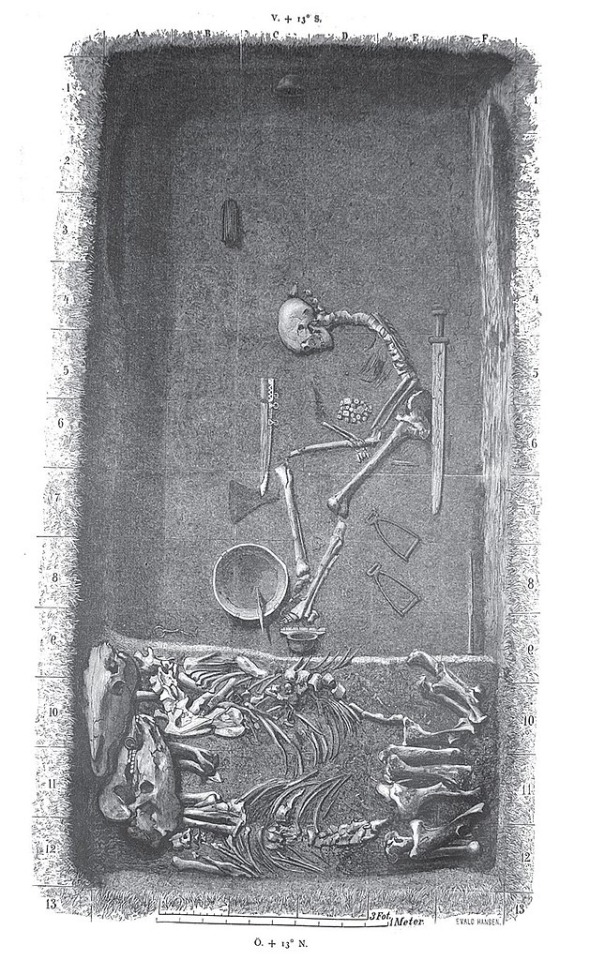
This grave was found on Birka (Björko) in 1878. The grave contained human remains, remains from two horses, bowls, weaponry, a shield(boss), a chess game and saddle stirrups. The burial room was built in wood. Most likely the person was buried seated, with the bones collapsing on themselves. Some remains of textile were found.
The assumption that the person was a man was quickly made and the “high status burial of a Viking warrior” was often cited in research.
It would take until 2017 when both osteological and genetic testing proved the person was in fact a woman. To this day it is the only genetically and archaeologically proven female warrior from the Viking age.
The reason I say genetically AND archaeologically is because it is assumed that gender was a very loose concept in the Germanic age. Biological gender wasn’t necessarily denied, but there are indications that people would take on “the role” of the other gender. A woman could “step up” as a man’s son, as seen in blood feud tales where the patriarch is killed, but if there is no son to avenge him, a woman would “take up the role” and set out, armed for revenge.
Biologically male individuals have been found with “female” attributes such as beads, pendants and certain decoration styles.
From the limited amount of research there is, it seems possible that cross-dressing, gender fluidity and gender role exchange were very normal before mass christianization.
Excavated by: Hjalmar Stolpe
Found in: Birka, Björko, Ekerö - Sweden
Drawing by: Hjalmar Stolpe
#frankish#merovingian#viking archaeology#archaeology#carolingian#charlemagne#field archaeology#viking mythology#merovingian archaeology#germanic mythology#valkyrie#Walküre#Wagner#richard wagner#norse mythology#anglo saxon#field archaeologist#frisian#viking#vikings#germanic#germanic folklore#germanic archaeology#odin#wodan#anglo saxon archaeology#history#jewelry#norse
293 notes
·
View notes
Text
Archaeological things that make me happy
Early medieval Germanic Buckets

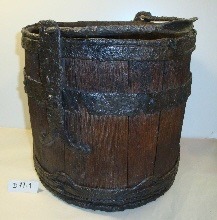

For reasons not really known, the Early Germans attributed an unknown importance to buckets. Both in Anglo Saxon and Merovingian graves can such buckets be found. I’d even call them pretty, and they’re 1500 years old.
1) RMO Leiden, object nr Rh763F, Rhenen-Utrecht, The Netherlands
2) KMKG Brussels, object nr D0077-001, Tienen-Vlaams Brabant, Belgium
3) The British Museum London, object nr 1939,1010.119 , Sutton Hoo - Suffolk, England
#field archaeology#anglos Saxon#germanic#early Germans#Merovingian#Frankish#charlemagne#archaeology#field archaeologist#Sutton hoo
240 notes
·
View notes
Text

The Wijnaldum brooch, 7th century Frisia, the Netherlands. Very happy with how this photo turned out.
@woedans / IG: Woedans
#wijnaldum#frisia#germanic#archaeology#nederland#paganism#viking#merovingian#history#artefact#ancient
622 notes
·
View notes
Text

Lovers from Klepp
A pair motif from one of 16 Gullgubber (tiny gold foil) found in Klepp, Norway. Some say the branch she holds represents the family they will grow together.
Gullgubber are found all over Scandinavia, especially in Denmark. And tend to be from the earlier part of the iron age then become less and less common toward the viking age.
#gullgubbe#guldgubbe#norse#archeology#illustration#iron age#viking age#norwegian history#viking#ancient civilizations#norse mythology#offering#merovingian#archaeology#grimmborg#flat
27 notes
·
View notes
Text
1,400-year-old remains of headless horse and rider discovered in Germany

The skeletal remains of a man buried 1,400 years ago near a headless horse have been discovered at an ancient cemetery in the town of Knittlingen in southern Germany. He likely was the horse's owner/rider when he was alive.
The man was buried at a time when the Merovingian dynasty (A.D. 476–750) flourished in the area, ruling a giant swath of territory in what is now France and Central Europe.
During his lifetime, the man likely served the dynasty's kings. "He stood in a 'chain of command' with the Merovingian kings on its top, which meant he was obliged to participate in the king's campaigns," Folke Damminger, an archaeologist in charge of research at the site, told Live Science in an email. Read more.
238 notes
·
View notes
Text
Germany: Archeologists Discover Decapitated Horse Next To Its Rider In Cemetery For Elite Warriors
Germany: Archeologists Discover Decapitated Horse Next To Its Rider In Cemetery For Elite Warriors
“Although the burials were often robbed in the early Middle Ages, numerous non-organic jewelry components such as pearl necklaces, fibulas (clasps), earrings and arm rings as well as belt hangers with decorative discs, everyday utensils (knives, combs) and objects with amulet character could be recovered from the graves of women and girls.”zenger.news

View On WordPress
#Archaeology#Baden-Wuerttemberg#Ehwaz#Germanic tribes#Germany#History#Männerbund#Medieval#Merovingians#Middle Ages#nature#Runes#Wyrd#wyrdkraft
4 notes
·
View notes